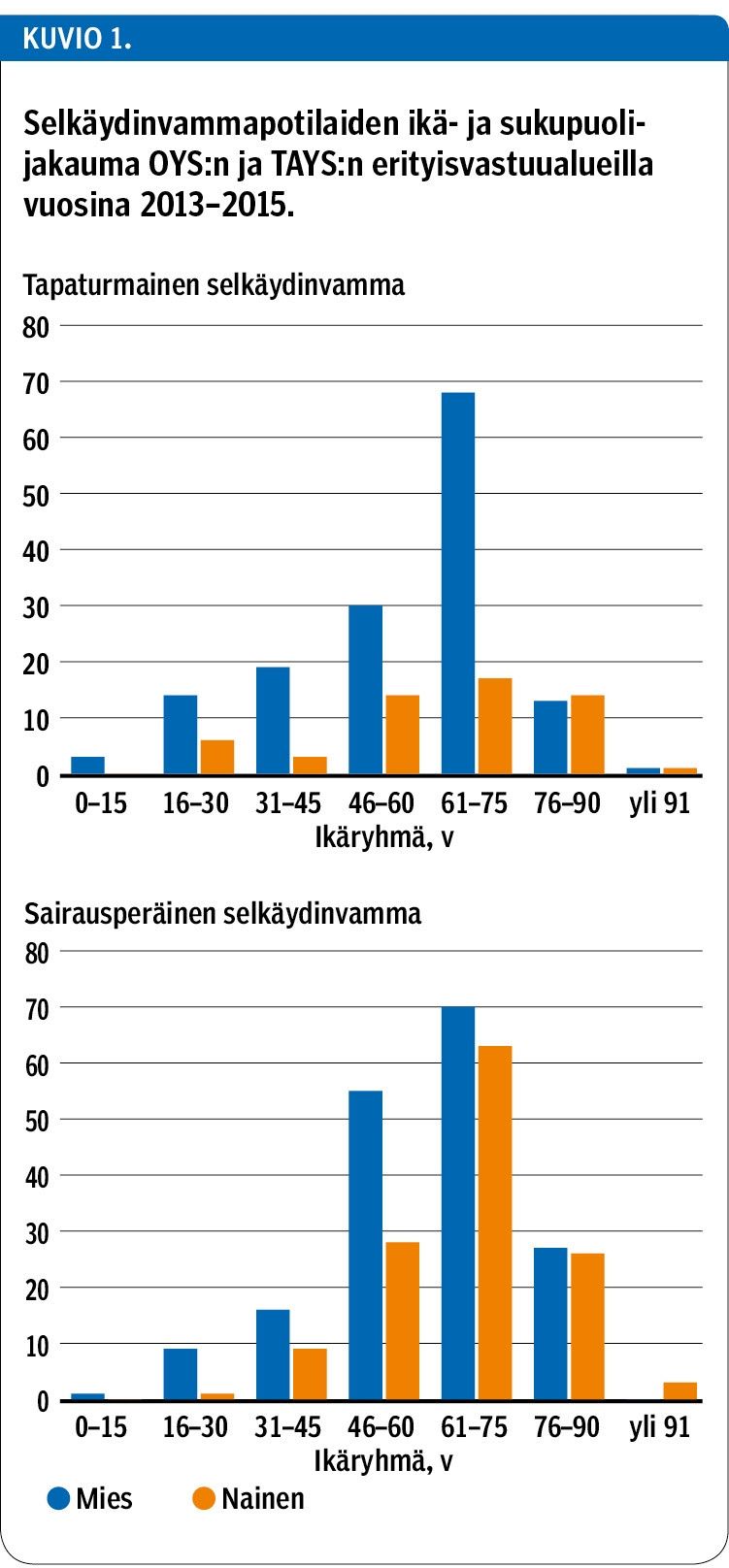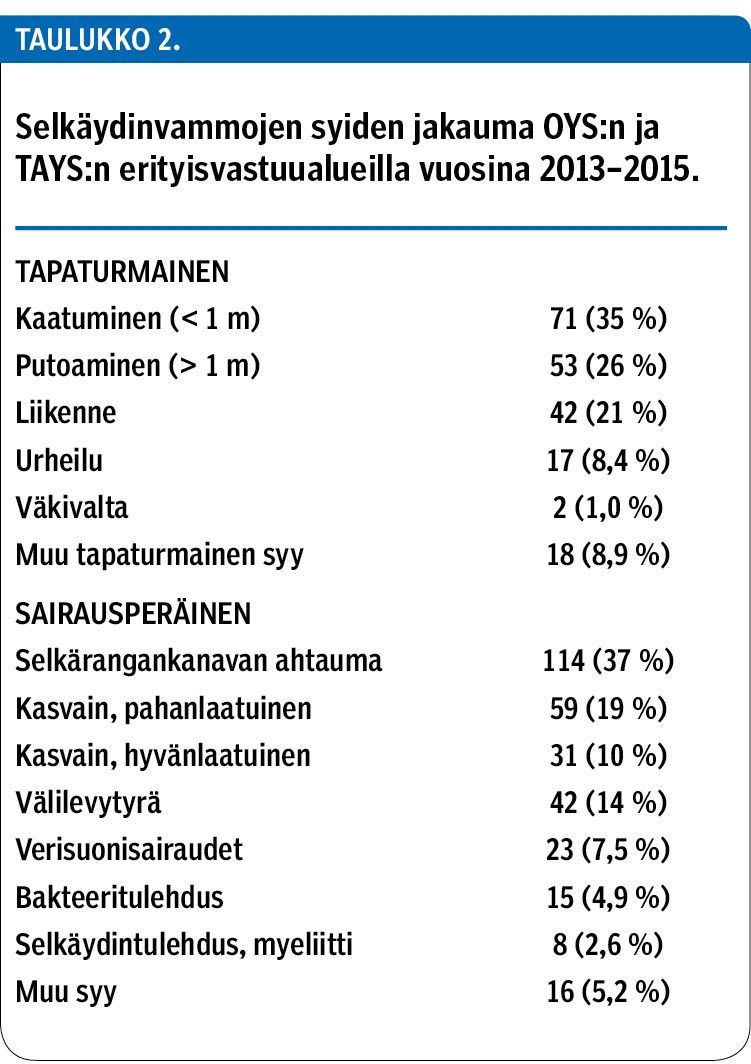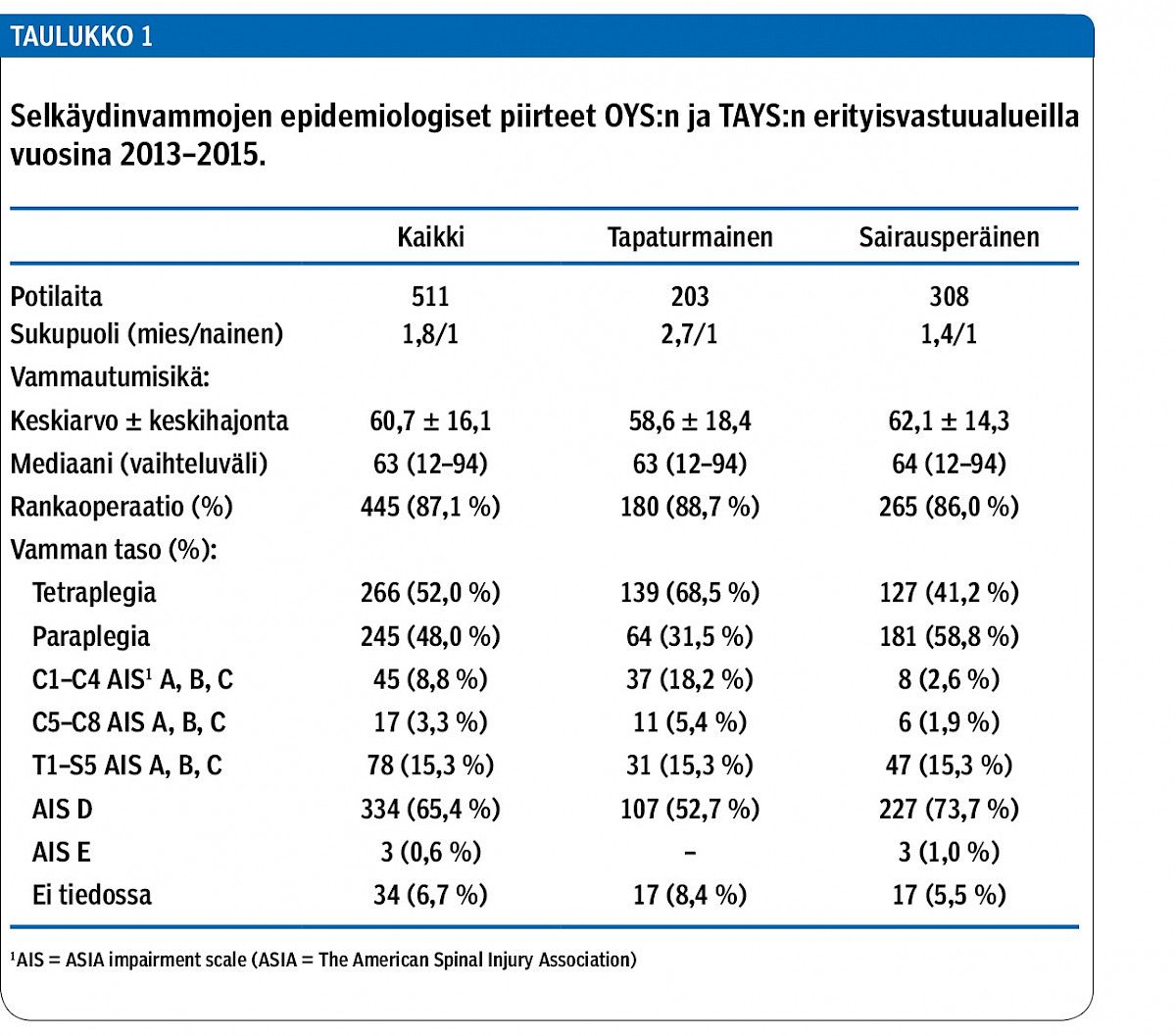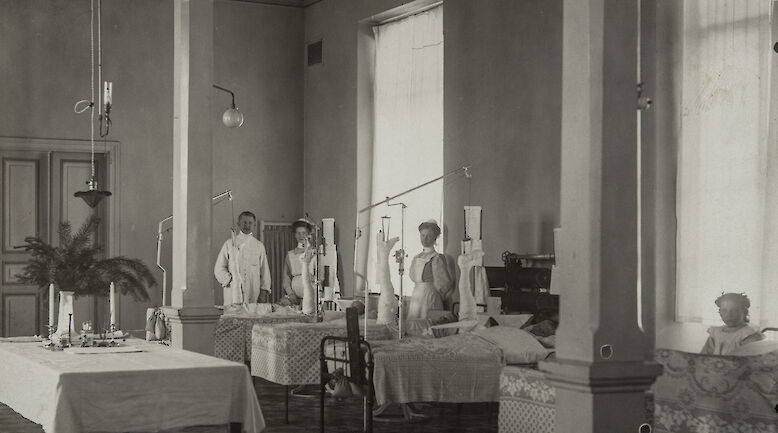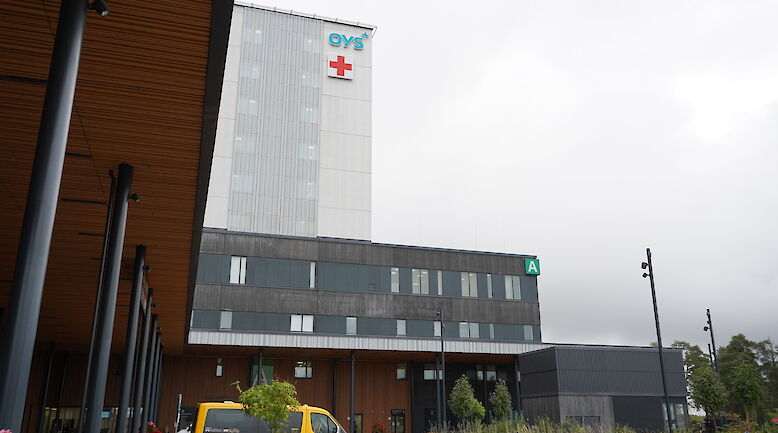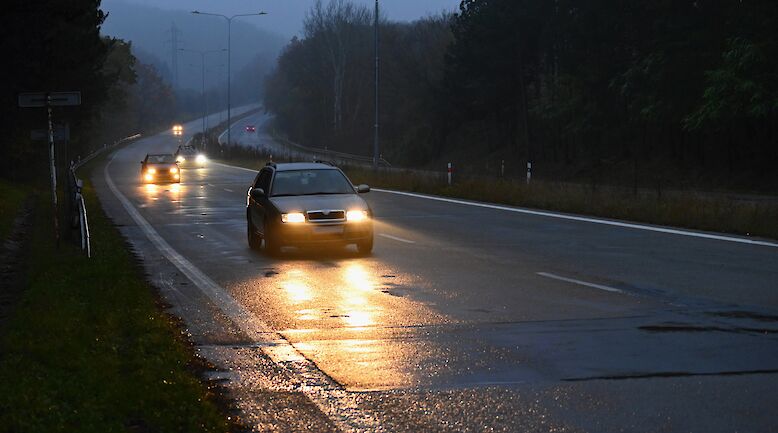Incidence of spinal cord injuries in finland higher than expected

Background
Spinal cord injury (SCI) care was centralised in Finland to take place in three university hospitals from 2011. However, the amounts of epidemiological data concerning traumatic SCI were limited and no data existed concerning non-traumatic SCI. Therefore, this study was conducted at two out of the three SCI units.
Methods
The prospective study was performed in Finland at the Oulu and Tampere University Hospitals’ catchment areas for highly specialised medical care from 1.1.2013 to 31.12.2015. The rehabilitation teams of the SCI units evaluated all the patients with a newly diagnosed SCI and persisting neurological symptoms. The data were recorded according to the International SCI Core Data Set and ICD-10 codes were used.
Results
During the 3-year period, 511 new SCI cases were reported, which gave a mean annual incidence of 92.0/million. Two hundred and three (40%) of the cases were traumatic SCI (TSCI) and 308 (60%) were non-traumatic SCI (NTSCI), with mean annual incidences of 36.5/million and 55.4/million respectively. The mean age of the patients with TSCI was 58.6 years and 73% of them were male. Tetraplegia was present in 65% of the patients, and 32% of the patients were injured under the influence of alcohol. The most common aetiologies were low-level falls (35%), high-level falls (26%) and traffic accidents (21%). In 47.3% of the TSCI cases, the injury was classified as severe (ASIA Impairment Classification A-C), and 49.8% of the patients were ambulatory at discharge. The mean age of the patients with NTSCI was 62.1 years and 58% of them were male. Tetraplegia was determined in 41% of the patients. The most common aetiologies were degenerative spinal stenosis (37%), malignancies (19%) and vertebral disc prolapses (13%). In 20% of the NTSCI cases, the injury was classified as severe (ASIA Impairment Classification A-C), and 65% of the patients were ambulatory at discharge.
Conclusions
The mean annual incidence of SCI was 92/million, which corresponds to 500 new annual cases of SCI in Finland with 40% of the injuries being traumatic. The incidence was higher than expected, and the incidence of NTSCI in particular was higher than the numbers previously published in Western Europe. In addition, the mean age of the patients was higher than expected. The health care system should focus on preventive measures that prevent falls in elderly people and alcohol-related injuries. Spinal cord-related symptoms should also be recognised early to prevent progression of non-traumatic spinal cord injuries.
